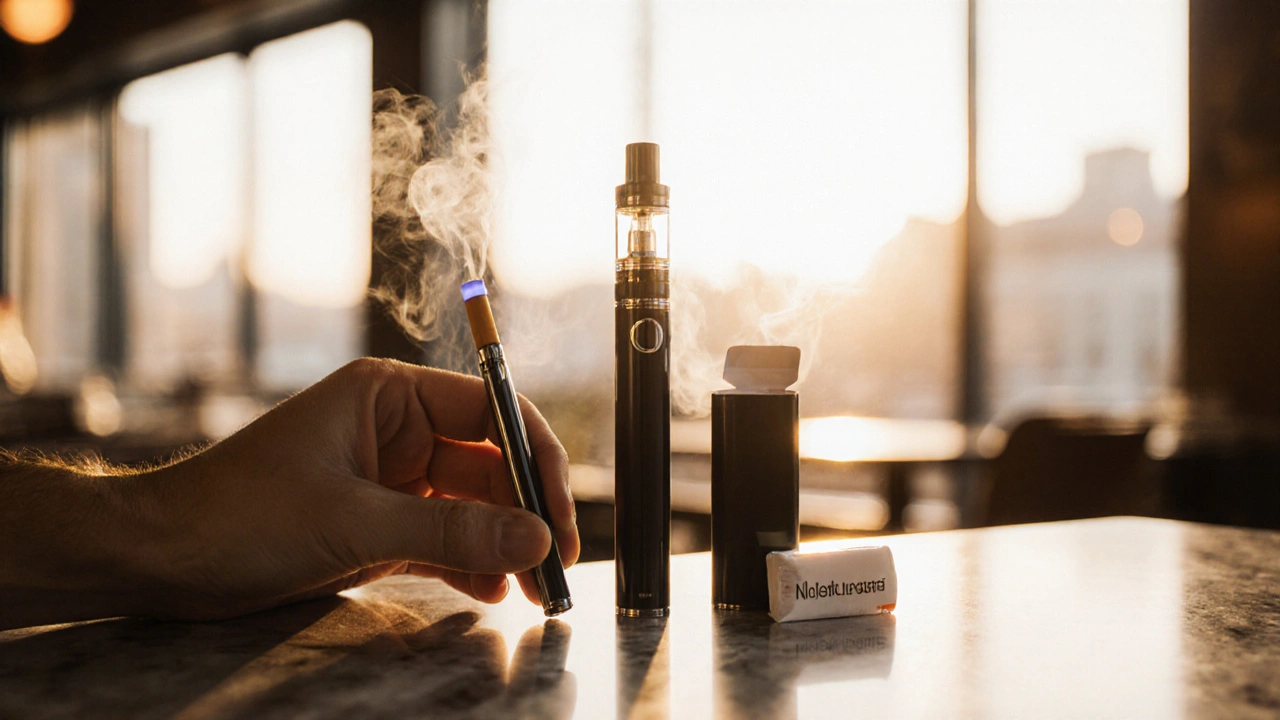Nicotine Pouches: What They Are, How They Work, and What You Need to Know
When you think of nicotine, you might picture cigarettes or vaping. But nicotine pouches, small, discreet, tobacco-free bags filled with nicotine and flavorings, designed to be placed between the gum and lip. Also known as nicotine sachets, they’re becoming a go-to option for people trying to quit smoking or cut back without inhaling smoke or vapor. Unlike cigarettes, they don’t burn, don’t produce smoke, and don’t require spit. You just pop one in, let it sit for 20 to 60 minutes, and the nicotine gets absorbed through your gums. No ash. No odor. No coughing.
These pouches are part of a bigger shift in how people manage nicotine use. They’re not drugs in the medical sense, but they’re often used as nicotine replacement, a method to reduce cravings and withdrawal symptoms by delivering controlled doses of nicotine without tobacco. Think of them like nicotine gum or patches—but more convenient, more social, and easier to hide. Many users switch to them after quitting smoking, or they start using them to avoid the health risks of smoking while still getting their fix. Brands like Zyn, On!, and Velo have made them popular, especially among younger adults who want something discreet and less stigmatized than vaping.
But they’re not harmless. Even though they don’t contain tobacco, they still deliver nicotine—a highly addictive substance that affects your heart rate, blood pressure, and brain chemistry. Regular use can lead to dependence, and quitting can cause irritability, trouble sleeping, or strong cravings. Some people use them to avoid withdrawal while trying to quit entirely. Others use them long-term because they’re easier than smoking. Either way, knowing what’s in them matters. Most pouches come in different strengths, from 2 mg to 12 mg of nicotine, and flavors range from mint to citrus to berry. Some include sweeteners or fillers, and not all are regulated the same way across countries.
There’s a growing group of people using nicotine pouches as a harm-reduction tool. They’re not a cure, but for someone stuck between smoking and quitting, they offer a middle ground. Still, if you’re not already using nicotine, starting these pouches isn’t a smart move. And if you’re trying to quit, they’re not a magic solution—you still need a plan. The posts below cover real experiences, safety tips, how they compare to other nicotine products, and what to watch for if you’re using them daily. You’ll find advice on managing cravings, understanding side effects, and making smarter choices whether you’re trying to stop or just switch.

Future of Smoking: Emerging Trends & Alternatives
- Oct, 12 2025
- 10
Explore the latest smoking trends, emerging nicotine alternatives, health impacts and regulatory changes shaping the future of smoking.
Categories
- Health and Wellness (51)
- Medicine (36)
- Health and Medicine (23)
- Women's Health (9)
- Mental Health (8)
- Men's Health (7)
- Beauty and Wellness (4)
- Health Information (4)
Archives
- December 2025 (12)
- November 2025 (25)
- October 2025 (27)
- September 2025 (14)
- August 2025 (3)
- July 2025 (2)
- June 2025 (2)
- May 2025 (3)
- April 2025 (4)
- March 2025 (4)
- February 2025 (2)
- January 2025 (3)
- online pharmacy
- medication safety
- dietary supplement
- health benefits
- dietary supplements
- prevention
- fertility
- online pharmacy Australia
- treatment
- treatment options
- benefits
- connection
- drug interaction
- drug interactions
- pregnancy
- Cancer Treatment
- depression medication
- antidepressants
- quality of life
- anxiety treatment
